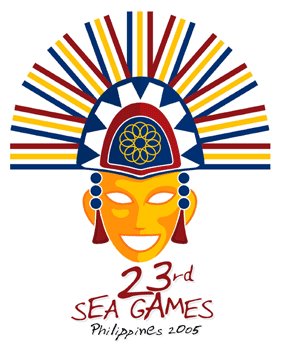
Chit-chat
Saturday, November 12, 2005
One ASEAN, One Heritage

23rd Edition of the South East Asian Games
Philippines - various location accress the country
Dates: November 27 - December 5, 2005
Official website: http://www.2005seagames.com.ph/index.html
Statistically, the 23rd Southeast Asian (SEA) Games constitute the biggest sporting event in the region, next to the Asian Games. Being the most anticipated event in Southeast Asia, the 2005 SEA Games will be hosted by the Philippines on November 27.
For the third time, the Pearl of the Orient Seas is hosting the most significant bi-annually multi-sport event in the region. This move is seen as an important collaborative step towards its closest neighbours.
The Games are also considered both a spectacular event and a valuable opportunity for athletes to gain competition experience and preparation for the upcoming Olympic Games. The South East Asian games were purposely created to strengthen friendship, solidarity and understanding among neighboring countries in the region.
This year's Games are a number of entertaining regional multi-sport events which feature not only 41 Sports. 395 Events. 7,000 expected athletes and officials, 11 competing countries, more than a billion of spectators worldwide-- and the 23rd SEA Games go on.
A total of eleven countries vying for gold, carrying the prowess and spirit of a true athlete, will partake in the said event not only to compete but to display their talents, sportsmanship and culture.
For many years now, the SEA Games is deemed as a solid foundation where Asian people meet as one in a friendly competition as such.
The time has come once again to celebrate the games that brought every nation in the South East Asian region with one goal: To defy the greatest challenge and to contend as a true athlete in honor of our nation.
‘One Heritage, One Asia ' theme of SEAG opening, closing rites
Opening & Closing Rites: Quirino Grand Stand, Manila
THE people behind the opening and closing ceremonies of the 23rd Southeast Asian Games assures that both presentations would stir a long-lasting impression to the minds of the viewing public.
Working behind the theme `One Heritage, One Southeast Asia,' overall director Maria Montelibano said the opening rites will showcase the rich heritage and culture that binds the Southeast Asian region as one and how from this common legacy sprang thousands of unique and extraordinary athletes with a singular passion – bring honor to their country and the SEA region.
The well-known television director is in-charge of the concept, with help coming from artistic and creative directors Pogs Mendoza and Robert Tongko.
The elaborate program unfolds segment-by-segment, explaining how one heritage has influenced a particular SEA country.
Every segment features a dynamic mix of dance and theater performance backed by the overall production management of Lito Nadal, Jaime Godinez (technical), Bebot Pondevida (execution programming)and Kokoy Jimenez (television direction).
With the National Commission on Culture and Arts (NCCA) lending help, the performance aims to mirror the culture of every SEA countries.
Well-known composer Ryan Cayabyab will be doing the musical arrangement along with the San Miguel Orchestra and SM Chorale while Bayang Barrios, the Bayanihan dance troupe and the Ati-Atihan tribe are among those providing live numbers.
 THE LOGO
THE LOGOThe logo makes use of the festival mask similar to those found in most Southeast Asian countries. It represents the many different cultures that will come together for the Games. At the same time the mask captures the exuberant spirit and hospitality of the Filipinos.
 THE MASCOT
THE MASCOTThe Philippine Eagle is one of the world's largest eagles, distinct for the majestic plumage on top of its head. The eagle is a symbol of strength and pride. It captures the winning spirit of all the participating athletes.
History of the SEA Games
The Southeast Asian Games is the largest and most significant multi-sport event in the region and is held every two years to enable athletes to meet in friendly competition as well as to foster goodwill, friendship and solidarity, in alignment with the aims and aspirations of the Association of Southeast Asian Nations (ASEAN).
The SEA Games originated from the SEAP (South East Asian Peninsular) Games which were inaugurated in Thailand in 1959, with just six participating countries- Burma (Myanmar), Laos, Malaysia, Singapore, Thailand and Vietnam. The SEAP was conceptualized by Laung Sukhumnaipradit, the then Vice-President of the Thailand Olympic Committee. He firmly believed that a regional sports event, similar to the Asian Games or the Olympic Games, will help promote cooperation, understanding and relations among countries in the region. His efforts were rewarded after two years of lobbying.
The SEAP Games continued to be held biennially until the Philippines and Indonesia joined the Games which was then renamed SEA Games at its 9th meet in Malaysia in 1977, with the admission of Brunei Darussalam as well. The name has since been officially adopted and the Games has now become the most important sports event of the region. Memberships of SEA Games already increased to ten with Cambodia being the last member.
MISSION: To strengthen political, economic, and social ties with the countries of the region.
VISION:
To develop tourism and increase revenue earnings.
To prepare itself to organize and host bigger events like The Asian Games and The Olympic Games
Note: The last time the Philippines hosted the SEA Games was in 1991, we were in 1st year H.S. then.
